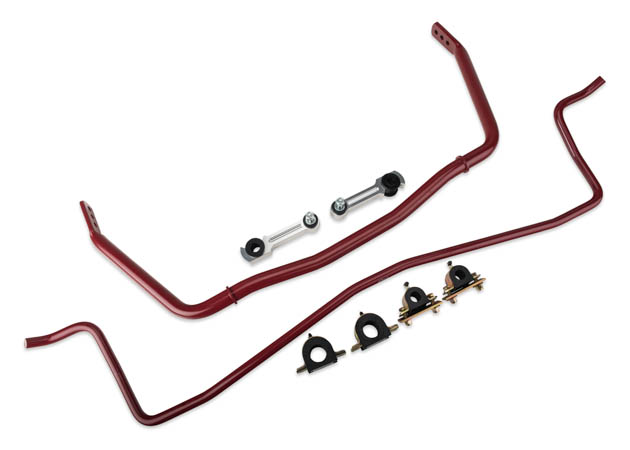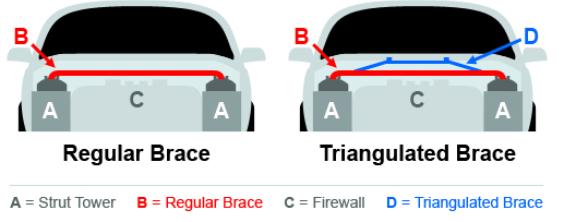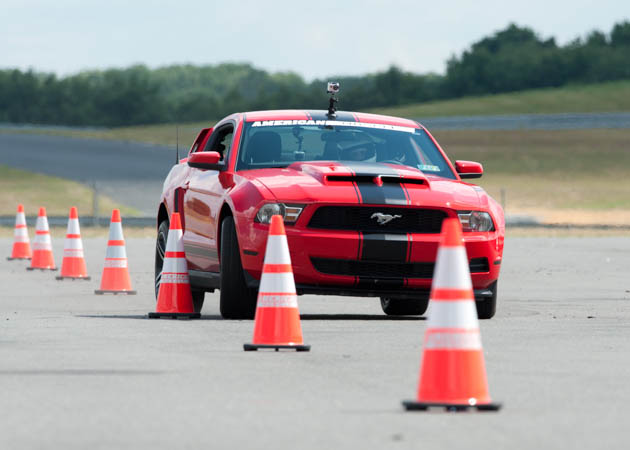The front suspension of any Mustang is the MacPherson strut system. MacPherson struts are units that combine the coil spring with the strut, mounted in the strut tower. This design, implemented for years (tried and true), does have some drawbacks.
The main disadvantage is all vertical loads are transmitted to the top of the strut tower. In hard or high speed cornering, the force of the vehicle turning is transmitted into the strut tower, causing the strut tower and chassis to flex whereas the suspension should be doing all the work. This in turn sacrifices traction and will reduce the speed your Mustang can take through a particular corner. With the proper tools, you can even measure small changes in the relationship of the shock towers to one another when the vehicle is jacked up as opposed to resting on the ground.
By connecting the two strut towers via a rigid brace, the cornering loads on the inside strut tower will now disperse across both strut towers (as they are connected by the brace), resulting in less chassis flex and ultimately keeping the leading tire better planted and positioned. In a more civilized role, strut tower braces will greatly help with ‘cowl shake’, a condition often met when driving on bumpy or poorly paved roads, particularly prevalent with convertible Mustangs. Benefits for cruising and racing alike!
Different connectors may use either two, or four of the bolts on each shock tower. All four bolts provide more rigidity, but visiting the alignment shop afterward is a good idea, as removing all four bolts for installation can alter alignment. A rear shock tower brace is also a possibility if you don’t mind fussing with the interior.
Shock and strut tower braces are highly recommended if you autocross or drift your Mustang because of the rapid weight transfers you’ll have to perform. Keep in mind front shock tower braces will need to clear your plenum or supercharger (should you have one). Not all braces are created with this boost or aftermarket plenum covers in mind. Be sure to read up on the brace you're interested in before pulling the trigger.



